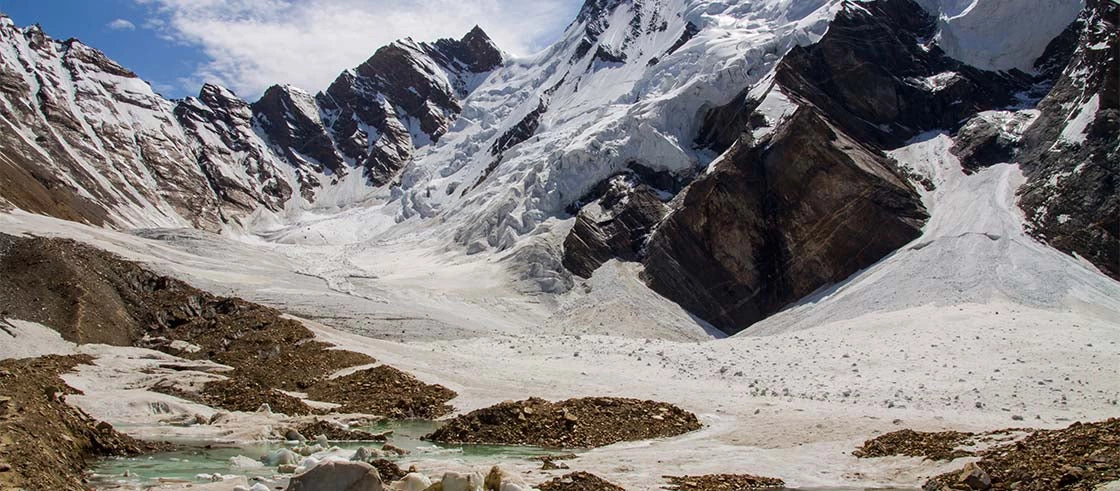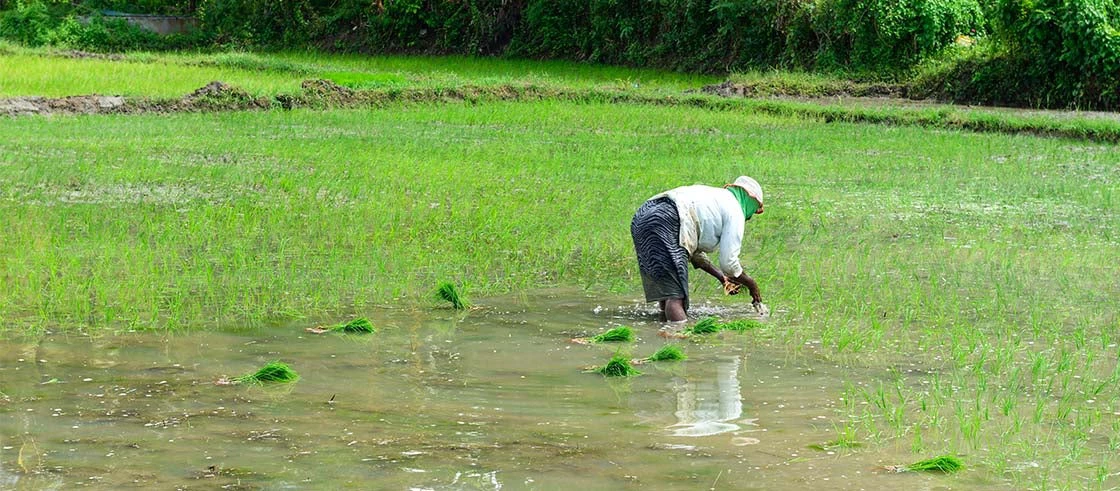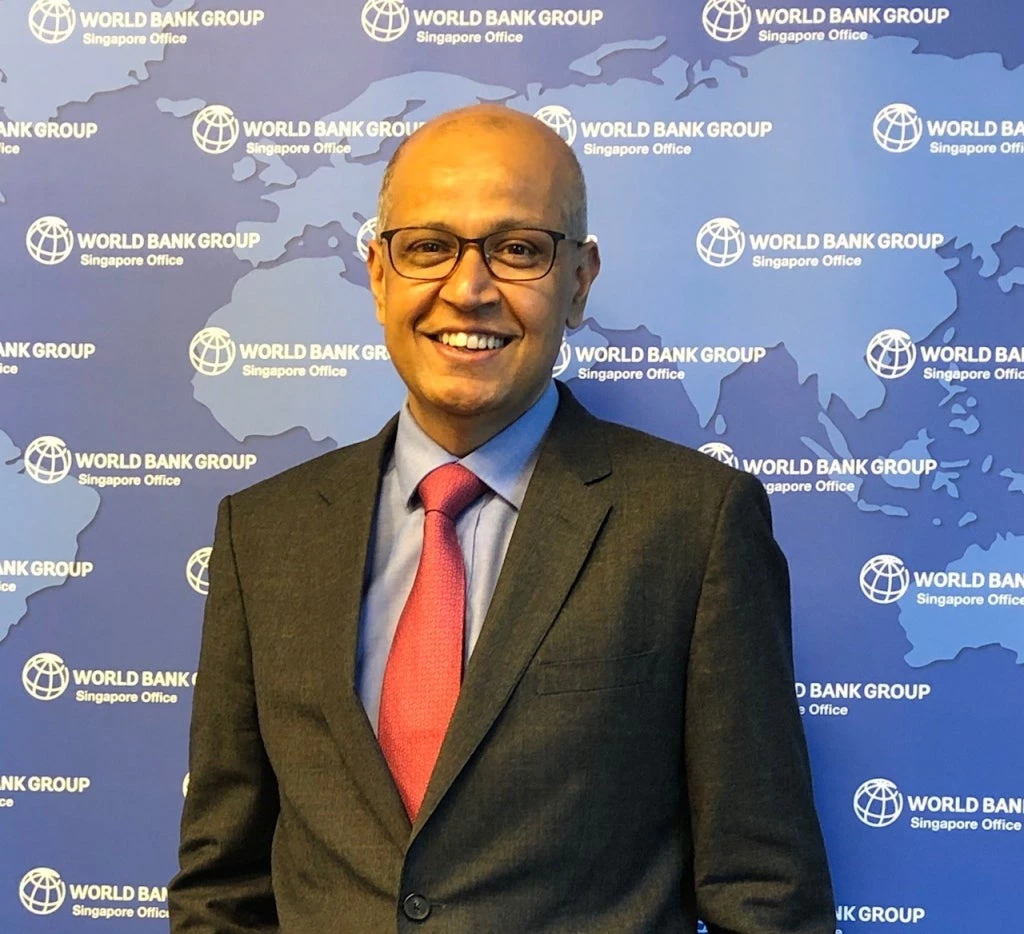 In Pakistan, summer of K2 area, ice melting is more appeared because of global warming and climate change effects. Photo: Chaton Chokpatara
In Pakistan, summer of K2 area, ice melting is more appeared because of global warming and climate change effects. Photo: Chaton Chokpatara
As COP26 ended with a much-debated final Glasgow Climate Pact, the discussions on progress and implementation are underway. The United Kingdom Government and the city of Glasgow deserve enormous appreciation for successfully pulling off such a critical yet challenging event, in the middle of a global pandemic. The world did make significant progress in many important areas including an agreement by 130 countries to work together to halt and reverse forest loss and land degradation by 2030, a pledge by major automakers and 30 national governments to phase out internal combustion engines by 2040 worldwide, and approximately 100 countries signing a global pledge to cut methane emissions by 30% by 2030.
As we roll out the implementation of the World Bank Group’s South Asia Climate Roadmap, here is a quick analysis of four big takeaways from COP26 for South Asia:
1. India’s net zero+ announcements are significant, but a lot of work lies ahead: India announced not just a 2070 net-zero target but also, perhaps even more significantly, nearer-term targets of 500 GW non-fossil fuel energy, 50 percent of the country’s installed capacity through renewables, 45 percent reduction in the carbon intensity of its economy, and a reduction of 1 billion tonnes carbon emissions by 2030. The International Energy Agency’s (IEA) landmark India Energy Outlook 2021 projects India to experience the most significant increase in energy demand of any country worldwide over the next 20 years. India has less than half of the world’s average per capita emissions . India’s development pathway in this decade will be much more critical than its distant net-zero target. This pathway will need to include sectoral green transition strategies for energy, transport, agriculture, water, and urban development with detailed investment plans to be implemented in the next decade. Taking a ‘whole-of-government’ approach to climate change will be essential so that every government agency and ministry acts on and “owns” the risks and opportunities from climate change.
India’s development pathway in this decade will be much more critical than its distant net-zero target.
2. Progress was made on coal and fossil fuel subsidies: The final Glasgow Climate Pact calls to accelerate the “phase-down” of unabated coal power from plants that don’t use carbon-capture technology . While this is a positive development, it still caused disappointment to those who wanted a commitment to entirely phase-out coal. If the world is to have any chance of keeping overall warming to below 1.5 degrees, then all major power producers must phase out old, high-capacity power plants with lower efficiency and higher emissions and stop any new unabated coal capacity. On the positive side, we must recognize that for the first time in the 27 years of COP discussions a phase-down of coal and a phase-out of fossil fuel subsidies have been mentioned and agreed by all 200 countries. Both Pakistan and Bangladesh have canceled all coal plants not currently under construction. Pakistan’s ambitious new NDC unveiled at Glasgow, the preparation of which was supported by the World Bank, reiterates its commitment to build no new coal power plants and bans the use of imported coal for energy generation. At the same time, many developing countries continue relying on coal as a cheap and the only secure resource they have in abundance for their critical energy needs. Coal generates millions of jobs and significant revenues for governments. Reducing dependency on coal will need significant financing, patience, and a phased approach to ensure a just transition for the poor and vulnerable whose livelihood depends directly or indirectly on coal. It is, therefore, significant that India, along with Indonesia, the Philippines, and South Africa, signed up as the first recipients of a multibillion-dollar pilot program aimed at accelerating their transition from coal power to clean energy through the Accelerating Coal Transition program of the Climate Investment Funds (CIF).
Reducing dependency on coal will need significant financing, patience, and a phased approach to ensure a just transition for the poor and vulnerable whose livelihood depends directly or indirectly on coal.
3. The Rules for Carbon Trading That Were Finalized Will be Positive for South Asian Countries: Article 6 of the Paris Agreement allows parties to lower abatement costs by working together in cooperative approaches that create internationally transferred mitigation outcomes. Negotiators finalized the rule for a global carbon finance market that would avoid loopholes and double counting and limited the number of prior credits brought under this framework. Carbon finance will play a critical catalytic role in leveraging private sector finance for flourishing regional power trade between the so-called BBIN countries: Bangladesh, Bhutan, India, and Nepal. The World Bank is working with the Royal Government of Bhutan to set up the Bhutan Climate Fund to monetize the carbon credits generated from the export of hydropower to India. Bangladesh and Pakistan have been selected to participate in the Partnership for Market Implementation. A potential area of support from the World Bank could be to help countries develop robust GHG inventories and registries.
4. There was no grand bargain on climate finance and this issue is likely to become prominent in COP27 and beyond: Climate commitments by developing countries have been made in the absence of a grand bargain on concessional climate finance, including but not limited to the $100 billion that was promised at Copenhagen 12 years ago. There were some promising signs, however, The Glashow Pact promises to double adaptation finance by 2025 and launches a two-year “Glasgow-Sharm el-Sheikh” work program on the global goal on adaptation. The US signed a statement agreeing to “increase resources” for loss and damage. The UNFCCC’s Adaptation Fund on November 8 raised a record US$ 356 million in new support from contributing national and regional governments. While this number is minimal relative to the needs, the renewed interest from development partners is encouraging. A critical $8.5 billion deal was agreed with South Africa to phase out coal power plants that could be a model for other large coal-consuming countries. The “India Green Guarantee” announced at Glasgow uses a UK government guarantee to create more World Bank lending space for India to finance its climate transitions. Other major development partners may consider similar approaches.



Join the Conversation